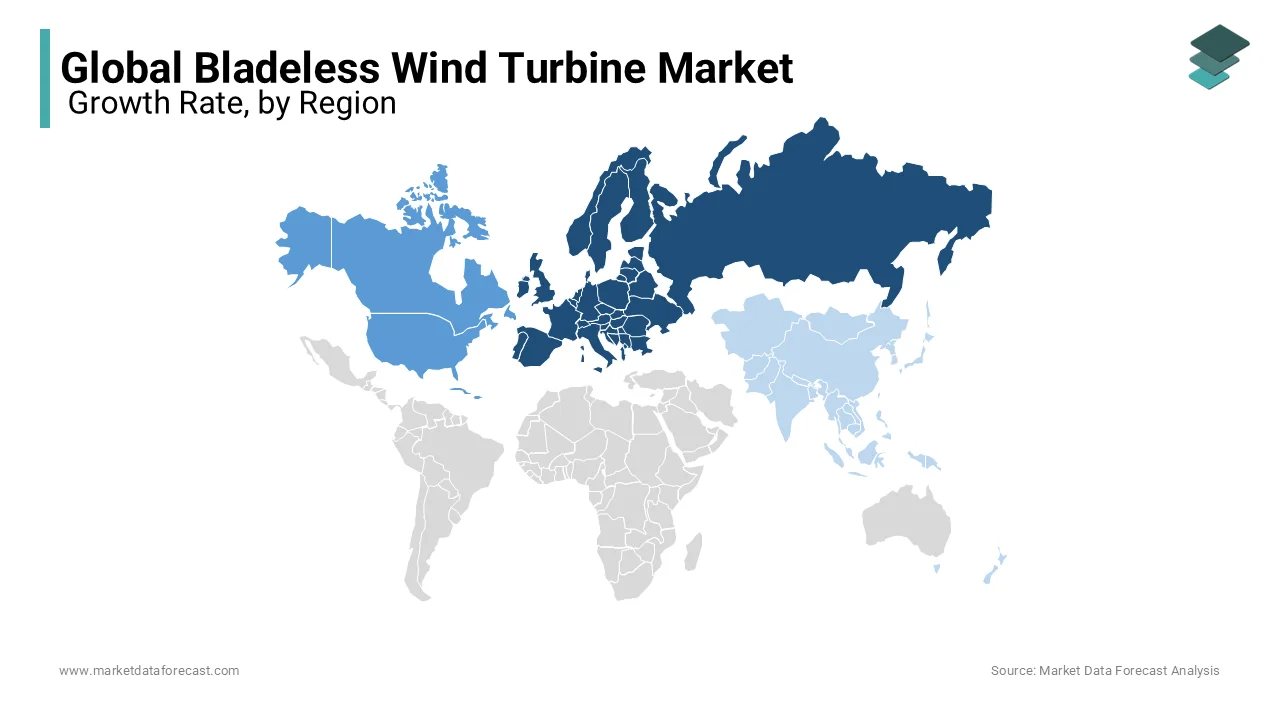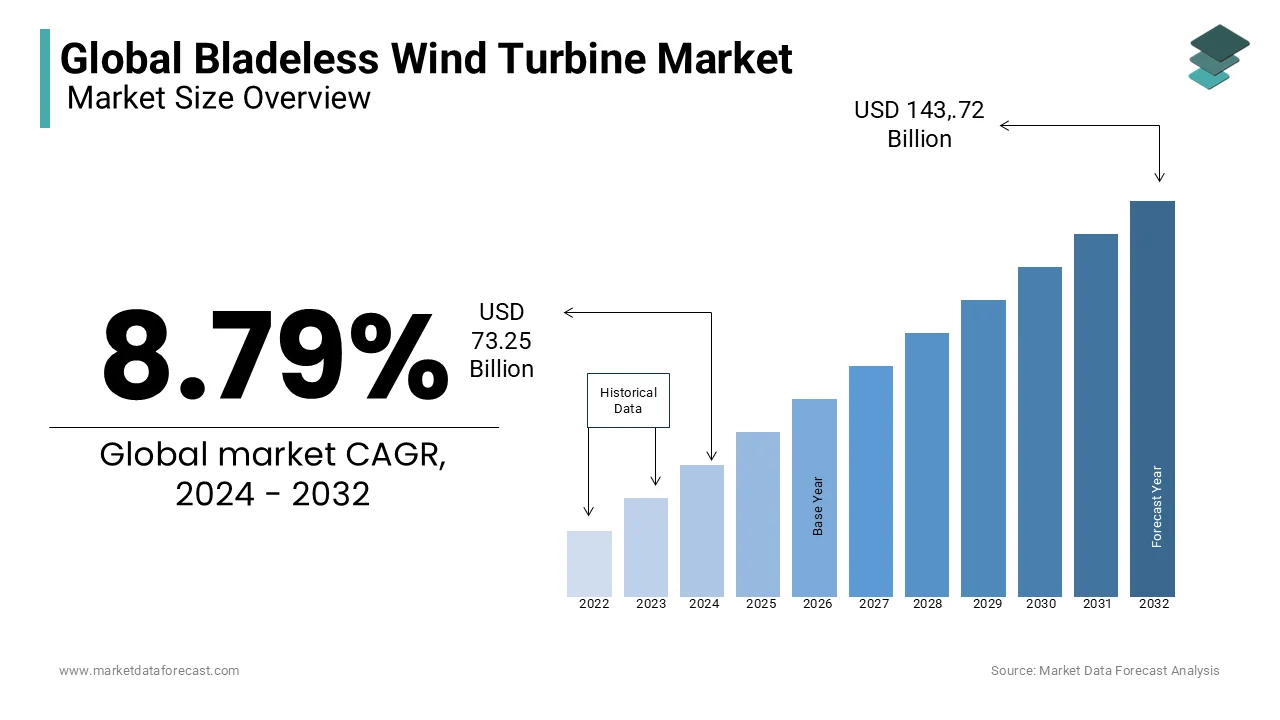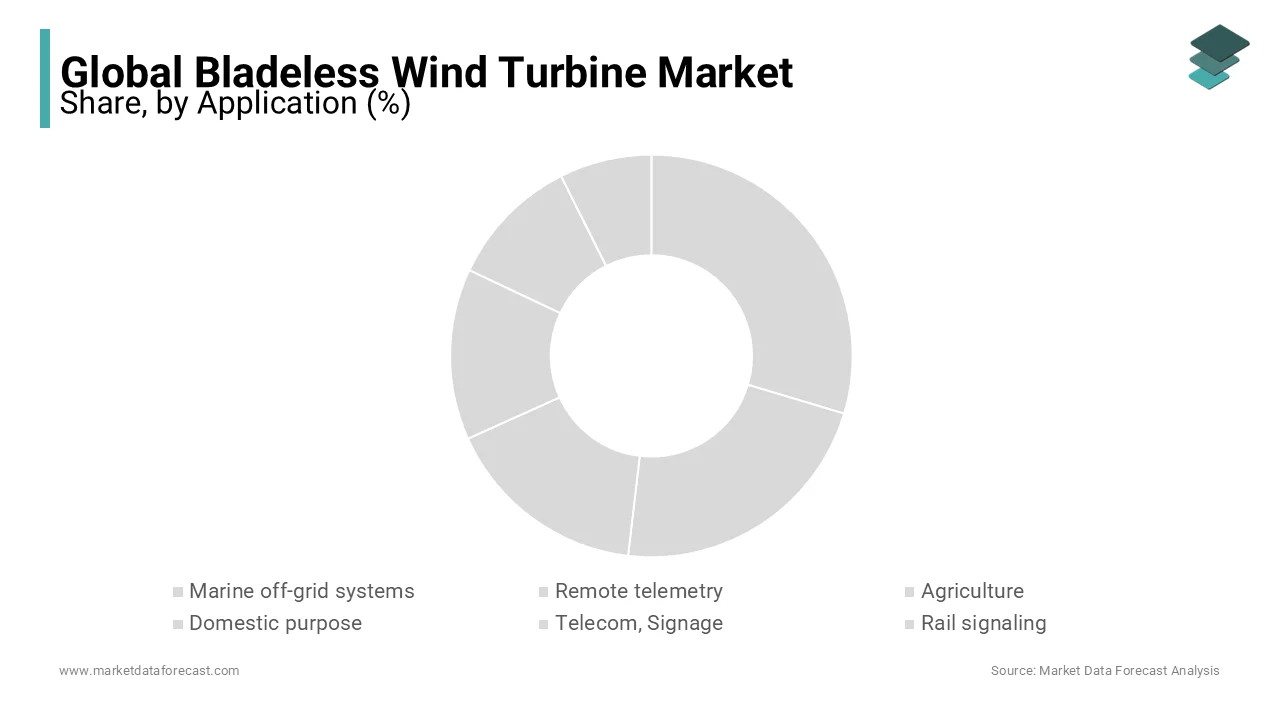Global Bladeless Wind Turbine Market Research Report - Segmentation By Applications (Marine off-grid systems, Remote telemetry, Agriculture, Domestic purpose, Telecom, Signage, Rail signaling, and Others), By End Users (Residential, Utility, Industrial, Commercial, and Others), By Region(Asia Pacific, North America, Europe, South America, and the Middle East & Africa) – Industry Forecast 2024 to 2032.
Global Bladeless Wind Turbine Market Size (2024-2032):
The size of the global bladeless wind turbine market was worth USD 67.33 Billion in 2023. The global market is anticipated to grow at a CAGR of 8.79% from 2024 to 2032 and be worth USD 143.72 billion by 2032 from USD 73.25 billion in 2024.
Current Scenario of the Global Bladeless Wind Turbine Market
Bladeless wind turbines are cylindrical structures without rotating blades. They resemble vertical cylindrical structures without the need for blades. They comprise two parts: a cylinder-shaped top part called the mast, which vibrates and oscillates, and a cylinder-shaped bottom part called the generator, which converts kinetic energy into electrical energy.
The bladeless turbine generates electrical energy through the vibrations induced by the wind. A vortex is created by passing the wind through the mast at the top of the cylinder, which creates a spinning motion of the air. The mast is then subjected to forces from the vortex at a specific frequency. As soon as the frequency of the forces is equal to the frequency of the mast's inherent frequency, resonance will occur. This will cause the mast to vibrate and oscillate, and eventually, the mast will start to oscillate and vibrate. Vortex-induced vibration is the term used to describe this phenomenon. Kinetic energy will be produced by the mast's vibration, which will then be converted into electrical energy in the generator.
MARKET DRIVERS
The wind energy industry has become one of the most crucial components of global renewable energy sources.
Wind turbines are the most common devices for converting wind energy to electrical energy. The various advantages of the bladeless wind turbine over the conventional type are the key factors driving the market's growth. Bladeless turbines are extremely lightweight and have low centrifugal forces. As a result, installation is made simpler, and anchoring or foundation requirements are greatly decreased compared to normal turbines. In addition, the demand for these turbines may rise because of how inexpensive they are to produce and maintain. The smaller spread areas of these turbines enable them to be placed on a given surface area cost-effectively, making up for the lost power efficiency produced by each turbine. Furthermore, bladeless wind turbines have few moving components that do not endanger birds and contribute to reducing noise. In addition to the oscillator itself, the oscillator part of the turbine is composed of carbon fiber-reinforced polymer, which ensures high fatigue resistance and results in minimal energy leaks during rotation when it oscillates.
Bladeless wind turbines can also be installed in residential areas because they require less space, lowering the installation cost in a large area away from populated areas. These benefits are the driving force behind companies developing more and more bladeless turbines to maximize their profits. The market is growing at a rapid pace as a result of the various government initiatives and the benefits that are arising from them for the companies.
MARKET RESTRAINTS
The market growth of bladeless wind turbines is constrained by the fact that they do not generate more electricity than traditional wind turbines.
In addition, bladeless wind turbines use advanced technologies still in the infancy of their development. The company has already made prototypes, but they are not yet available for public consumption. Due to the lack of blades, these turbines capture less air, which reduces their swept area and lowers their efficiency.
REPORT COVERAGE
|
REPORT METRIC |
DETAILS |
|
Market Size Available |
2023 to 2032 |
|
Base Year |
2023 |
|
Forecast Period |
2024 to 2032 |
|
CAGR |
8.79% |
|
Segments Covered |
By Application, End-User, and Region. |
|
Various Analyses Covered |
Global, Regional & Country Level Analysis, Segment-Level Analysis, DROC, PESTLE Analysis, Porter’s Five Forces Analysis, Competitive Landscape, Analyst Overview of Investment Opportunities |
|
Regions Covered |
North America, Europe, APAC, Latin America, Middle East & Africa |
|
Market Leaders Profiled |
Vortex Bladeless, Nordex, Enercon, Goldwind, Suzlon and Envision, Mitsubishi Heavy Industries, Siemens, Senvion, GE Renewable Energy, Vestas General Electric, and Others. |
SEGMENTAL ANALYSIS
Global Bladeless Wind Turbine Market Analysis By Application
The domestic purpose in the applications segment is leading the bladeless wind turbine market in terms of growth in 2023. The factor driving this application's growth is that it does not require a large area for it to be installed compared to the conventional type. These bladeless turbines for domestic use generate electricity for commercial and residential buildings. They contain the grid connections and battery storage in the buildings for the supply.
The agricultural segment is also expected to grow significantly during the forecast period as electricity is the main problem for farmers for their equipment and other purposes. Furthermore, they can reduce their costs by using the electricity produced by the bladeless turbines. They will be able to save money as a result, which they may utilize to increase food production. They may raise output, buy new machinery, and boost their earnings. These are some factors driving the growth of bladeless wind turbines in the agriculture sector.
Global Bladeless Wind Turbine Market Analysis By End User
The residential end-use segment is leading the bladeless wind turbine market in terms of growth in 2023 and is expected to grow significantly during the forecast period. The bladeless wind turbine does not generate a high amount of electricity as compared to the conventional ones. It does not cover more space, so they are used mostly for residential buildings, as they are light-weighted and do not require more maintenance. The residential building can utilize the electricity generated from these wind turbines through an off-grid system.
Recently, various companies have started to develop bladeless wind turbines that generate more power and can be utilized by others. The numerous features these wind turbines provide drive other end users to adopt them for their utilization purposes.
REGIONAL ANALYSIS

The European region is expected to grow at a high rate compared to others in the forecasted period. This growth of bladeless turbines in the region will be due to the favorable conditions of the environment in terms of winds and awareness about harnessing the natural form of energy. In addition, the adoption of advanced technologies in the region is also one of the factors driving the region's growth in the offshore wind turbine market.
The North American region is growing significantly due to its high investment in the research and development sector to develop new technologies for harnessing wind energy. For example, the USA is leading the region as researchers plan to develop taller bladeless wind turbines to use the turbulence of air more so that the amount of electricity generated should be increased.
The Asia-Pacific region is also growing significantly due to various government initiatives on clean energy. In addition, the presence of various startups and government support is making the development of offshore wind turbines much easier than in other regions. The leading countries in the region are China, India, Japan, and South Korea. The key factor for the increase in growth in this region is the increase in electricity demand, which is due to the rapid growth of the population.
KEY PLAYERS IN THE GLOBAL BLADELESS WIND TURBINE MARKET
Companies playing a prominent role in the global bladeless wind turbine market include Vortex Bladeless, Nordex, Enercon, Goldwind, Suzlon and Envision, Mitsubishi Heavy Industries, Siemens, Senvion, GE Renewable Energy, Vestas General Electric, and Others.
RECENT HAPPENINGS IN THE GLOBAL BLADELESS WIND TURBINE MARKET
- In October 2021, the parent company of the Spanish independent integrated renewable player Ignis Group, Ignis Energy Holdings, agreed with Vortex Energy, a global renewable energy provider. Through its recently established Vortex Energy IV Fund and co-investors, Vortex Energy will make many substantial investments into Ignis over the next few years, totalling approximately €625 million. As a result, Ignis can finance its expansion plans and develop into a fully integrated renewable IPP in Spain and other countries.
DETAILED SEGMENTATION OF THE GLOBAL BLADELESS WIND TURBINE MARKET INCLUDED IN THIS REPORT
This research report on the global bladeless wind turbine market has been segmented and sub-segmented based on application, end-user and region.
By Application
- Marine off-grid systems
- Remote telemetry
- Agriculture
- Domestic purpose
- Telecom, Signage
- Rail signaling
- Others
By End User
- Residential
- Utility
- Industrial
- Commercial
- Others
By Region
- North America
- Europe
- Asia Pacific
- Latin America
- Middle East & Africa
Frequently Asked Questions
1. What is the forecast period's growth rate of the Bladeless Wind Turbine Market?
The Bladeless Wind Turbine market is growing at a CAGR of 8.79%.
Which of the Bladeless Wind Turbines by Applications will lead in the future?
The domestic Bladeless Wind Turbine is leading the application segment and is predicted to grow faster than other types.
How much is the Bladeless Wind Turbine Market expected to be worth?
Some key players are Vortex Bladeless, Enercon, Suzlon and Envision, and others.
5. Who are the Major Players in the Bladeless Wind Turbine Market?
The Bladeless Wind Turbine Market is studied from 2024-2032.
Related Reports
Access the study in MULTIPLE FORMATS
Purchase options starting from $ 2500
Didn’t find what you’re looking for?
TALK TO OUR ANALYST TEAM
Need something within your budget?
NO WORRIES! WE GOT YOU COVERED!
Call us on: +1 888 702 9696 (U.S Toll Free)
Write to us: [email protected]

